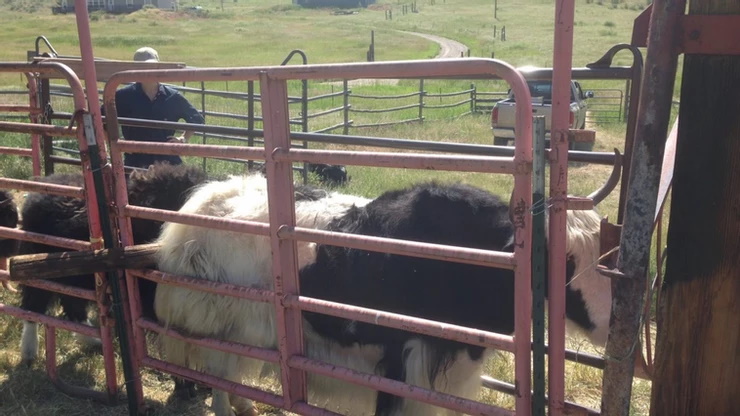By Gregor Dike
One of the key overall measurements of a beef production operation is the weight gain per day of its heifers, steers and bull calves. Simply put, the better the growth per day, the better the program (forage and genetics), the greater the profit. Beef producers know the numbers for their cows and bulls – what kind of lb/day growth they expect from the offspring given their feed. They know what weaning weights to expect, what one year weight to expect and so on. As such they know which cows and bulls improve the herd and which detract from it.
Why aren’t we talking the same way about yaks. We talk about color pattern, pedigree and conformation but not about what kind of growth to expect from the offspring of a specific bull or cow. For a yak meat producer that should be the key question when buying a bull or cow for their herd: Not what their pedigree is (apart from preventing inbreeding) but what weight gain can I expect from its offspring. And it should one of the key questions for a breeder to ask as their market includes meat producers looking for production stock.
Are you and I prepared to answer this question? Can we point to our bulls and cows and talk about daily gain of their offspring on our feeding program? The beef industry does, why aren’t we? It is “a” or “the” key measurement of a yak’s economic quality isn’t it?
So, I started just recently to put some data together on eight “yearling” yaks I have as a way to start gathering this critical “economic potential”. Five are heifers one year old. Three are bull calves.
Two of the heifers sired by bull number 1 gained an average of 52.5 pounds in 79 days on grass or 0.66 pounds per day.
Three of the heifers sired by bull number 2 gained an average of 62.3 pound in 79 days on the same grass or 0.79 pounds per day. In this group two of the heifers averaged over 0.96 pounds per day which may show the power of those two dams.
The three bull calves were as follows:
Bull calf number 1 is eleven months old and gained 86 pounds in 79 days or 1.09 pounds per day. His sire was bull #1 above.
Bull calf number 2 just turned a year and gained 99 pounds in 79 days on grass or 1.25 pounds per day. His sire was bull #2 above.
Bull calf number three is 18.5 months old and gained 81 pounds over the 79 days on grass or 1.02 pounds per day. His sire was bull #1 above.
Are these gains good? I don’t know. I have nothing to compare them to. Can I compare gain per day of a twelve month old yak against that of an eighteen month old yak? I don’t know. But I am going to start collecting data on my 2018 calf crop and continue to monitor these. But this data will be from one herd and for two or three bulls. I will be able to make better informed decisions within my own herd in terms of breeding over time from this data as it grows but I have nothing to compare it to.
So, here is my proposal to breeders with scales and those who might get one to really get a look at what is going on in their breeding/production program. Why don’t we determine a set of ages at which we will weigh our calves up to a certain age and combine the data to start generating growth curves for yaks raised in the United States? If we do this we will begin to have hard data with which to measure the quality of the calves we are producing (and perhaps the quality of our forage). This will allow us to cull based on data, sell and price based on data and to eventually purchase based on data. If interested, please contact me at nct1108@yahoo.com.
We are only going to obtain this information if we all work on it together. This information is needed for herd improvement decisions (breeding, genetics, culling, purchases), forage/pasture development and marketing.

